The new dawn of the London sandwich shop
The appeal of a quick meal between two slices of bread has long held sway in the UK. We look back on the rise of the sandwich shop and explore the new wave of London venues that are making it a more stylised experience
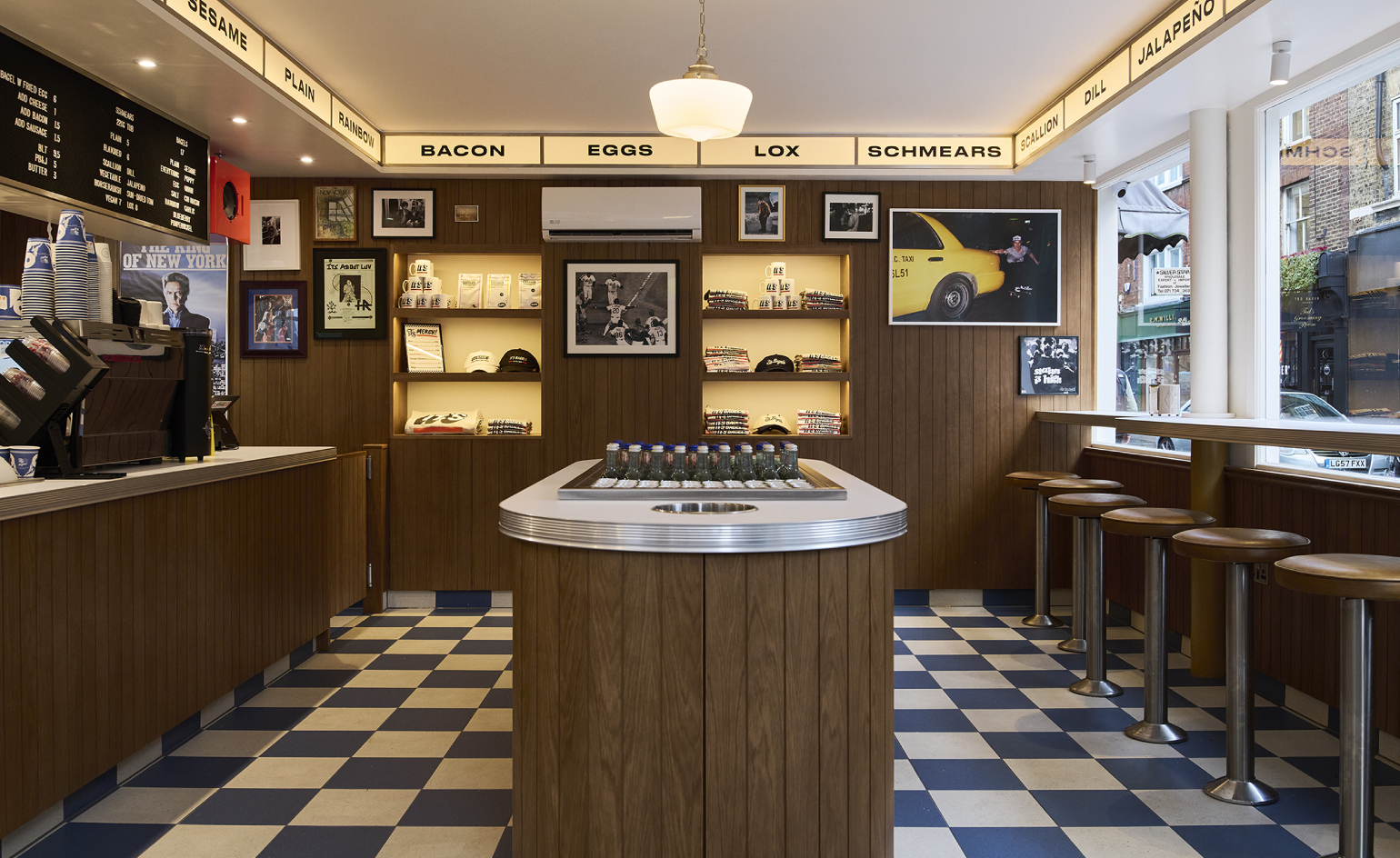
Spanning centuries and borders, the sandwich is one of the most universally familiar dishes. Simple, portable and versatile, the appeal of a meal between two slices of bread endures. It’s an optimal canvas, infinite in scope. You can trace London sandwich shops back to the mid-19th-century sandwich bars dotted around The Strand, targeting hungry theatre-goers. Later on, shops like Sandy’s, which was opened in 1925 by British actor and theatre director Kenelm Foss, were a source of lunchtime nosh for throngs of workers, and honeypots for the creatives of the day.
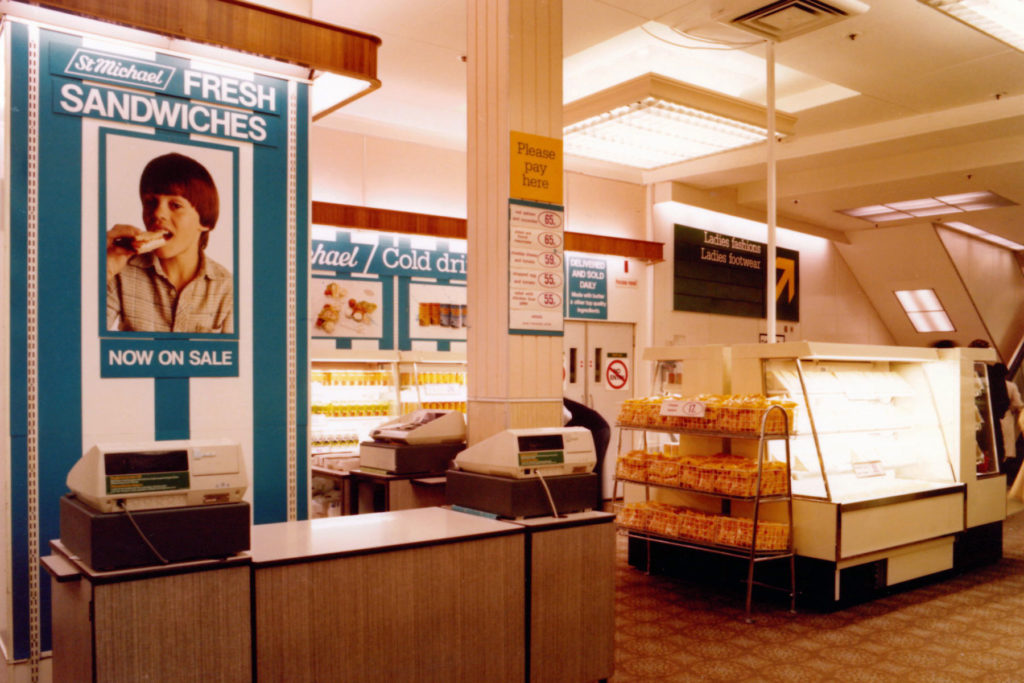
M&S Sandwiches, 1982
Some of these historic shops still exist, like 125-year-old Paul Rothe & Son in Marylebone. However, the pre-packaged sandwich (pioneered by Marks & Spencer in 1980 and popularised with Pret’s 1986 launch and Boots’ seminal ‘meal deal’ at the turn of the millennium) eventually flooded the market with quick options. Add in the appearance of more unusual fast food options in the late 1990s to mid-2000s – think Wasabi, Itsu or Leon – and the sandwich shop came under threat.
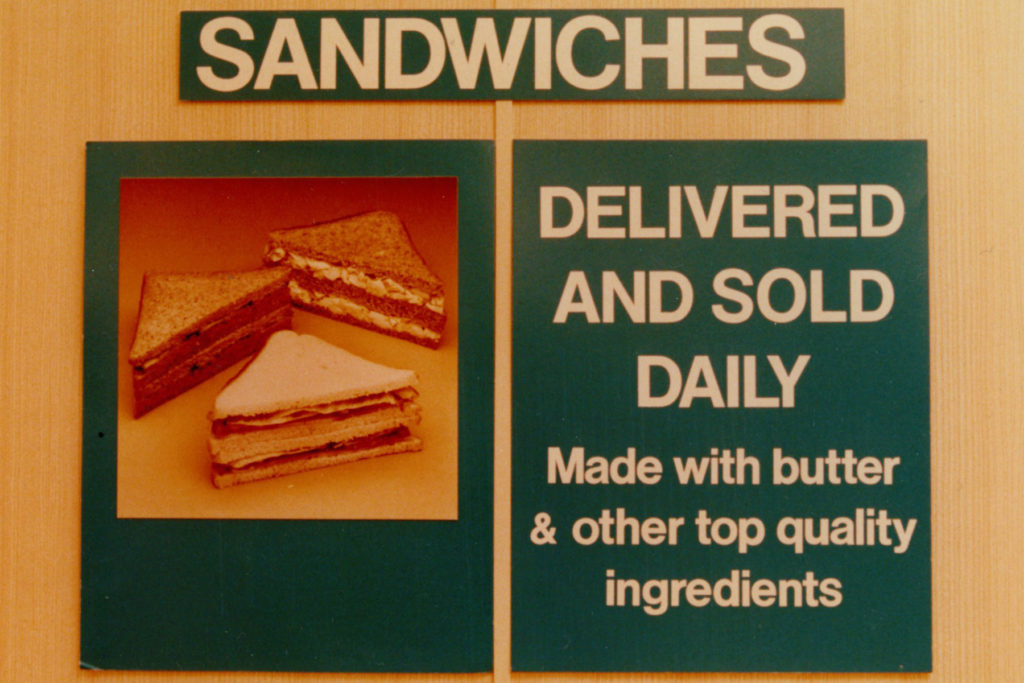
M&S sandwich production, 1987
Why the London sandwich shop is back in fashion
But the sandwich shop has seen a revival. Sandwiches became an ‘it’ food again in the mid to late 2010s. We saw the likes of The Dusty Knuckle serving their famed potato sourdough sandwiches from 2013 initially out of a shipping container in Hackney. The following year Max’s Sandwich Shop opened in Crouch End, attracting fans with sandwiches as packed as a rush-hour Tube with rich fillings like ham, eggs and chips.
Now, we see the likes of Bristol’s Sandwich Sandwich, which brought its social feed-friendly slabs with symmetrical rainbow-like cross sections to the City last year, already planning a second (and whopping, at 3,500 sq ft) London shop. Cult sandwich brand Crunch is about to open its first permanent site, following the popularity of its Spitalfields stall – serving brioche-y bricks with sumptuous fillings, like duck leg and quince, since 2023. Sandwich shops are cool again, and food entrepreneurs are responding accordingly.
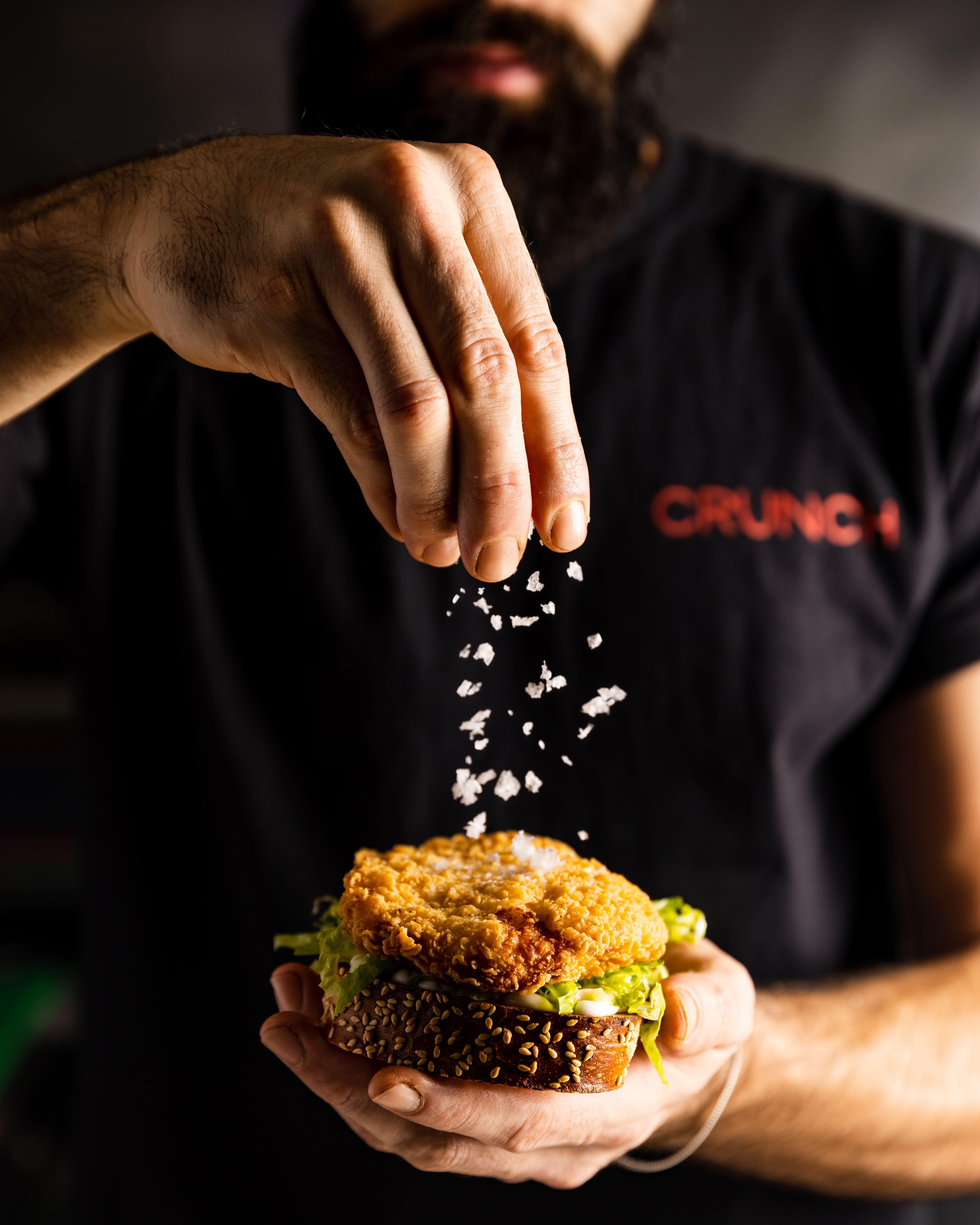
The Crunch x Kushi London ‘Katsu Sando’
The new vanguard of London sandwich shops are positioned as trendy destinations, worth travelling to even on the weekend. These aren’t just pit stops for a speedy mid-week lunch to bifurcate a long day of maximising shareholder value. For Jack Macrae, who co-founded Mondo Sando as a sandwich delivery service during the pandemic with school friend Viggo Blegvad, lockdown was integral to this shift.
‘The last three to four years have been nuts for sandwiches,’ he tells Wallpaper*. ‘It’s definitely connected to lockdown. One of the most exciting things you could do was get a fun sandwich. Dom’s Subs was a lockdown thing for example.’ He refers to the semolina-dough Italian-American-style rolls that blew up from an ‘order via Instagram DM’ model run out of a café basement on Hackney Road, to an in-demand brand with two sites within the Square Mile.
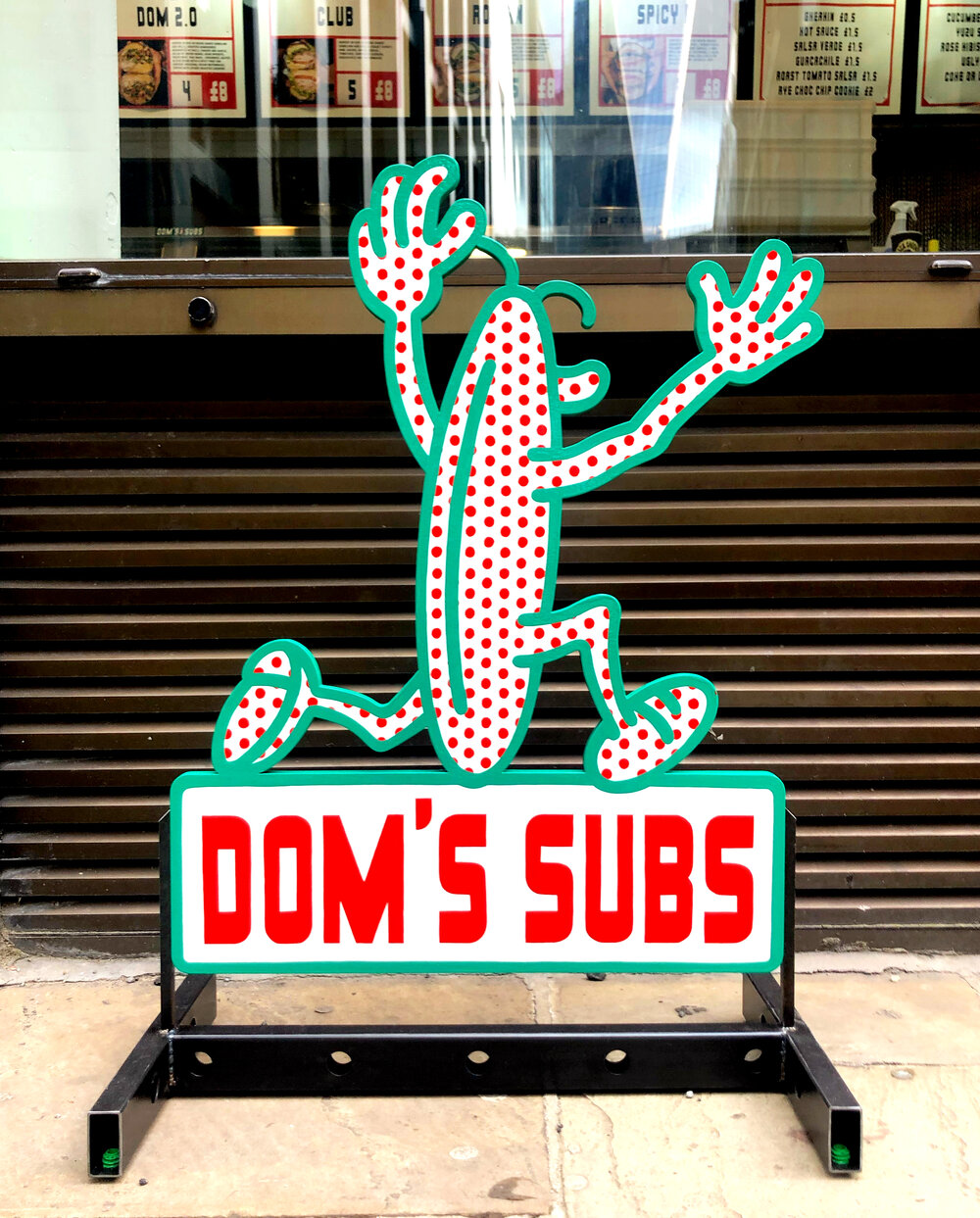
Dom’s Subs identity and branding by Sean Thomas
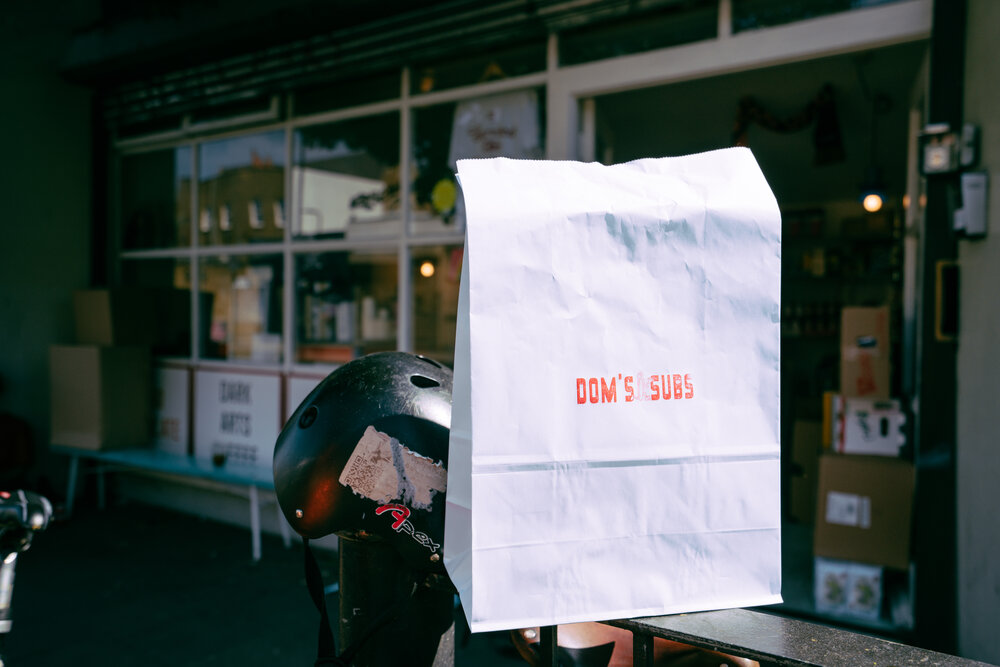
‘People want that special meal feeling without spending the Earth,’ says Freddie Sheen, who opened ‘gourmet sandwich shop’ Rogue Sarnies with co-founder Zac Whittle in 2023. He shares how the tricky economic climate boosted sandwich shops, where decadent options such as its beef shin with caramelised onion offer indulgence without the restaurant price tag.
Wallpaper* Newsletter
Receive our daily digest of inspiration, escapism and design stories from around the world direct to your inbox.
As well as enhancing the product itself, newer shops are using an aesthetic character to emit an individual brand ethos, setting themselves apart from the historically more homogenous sandwich shop identity.
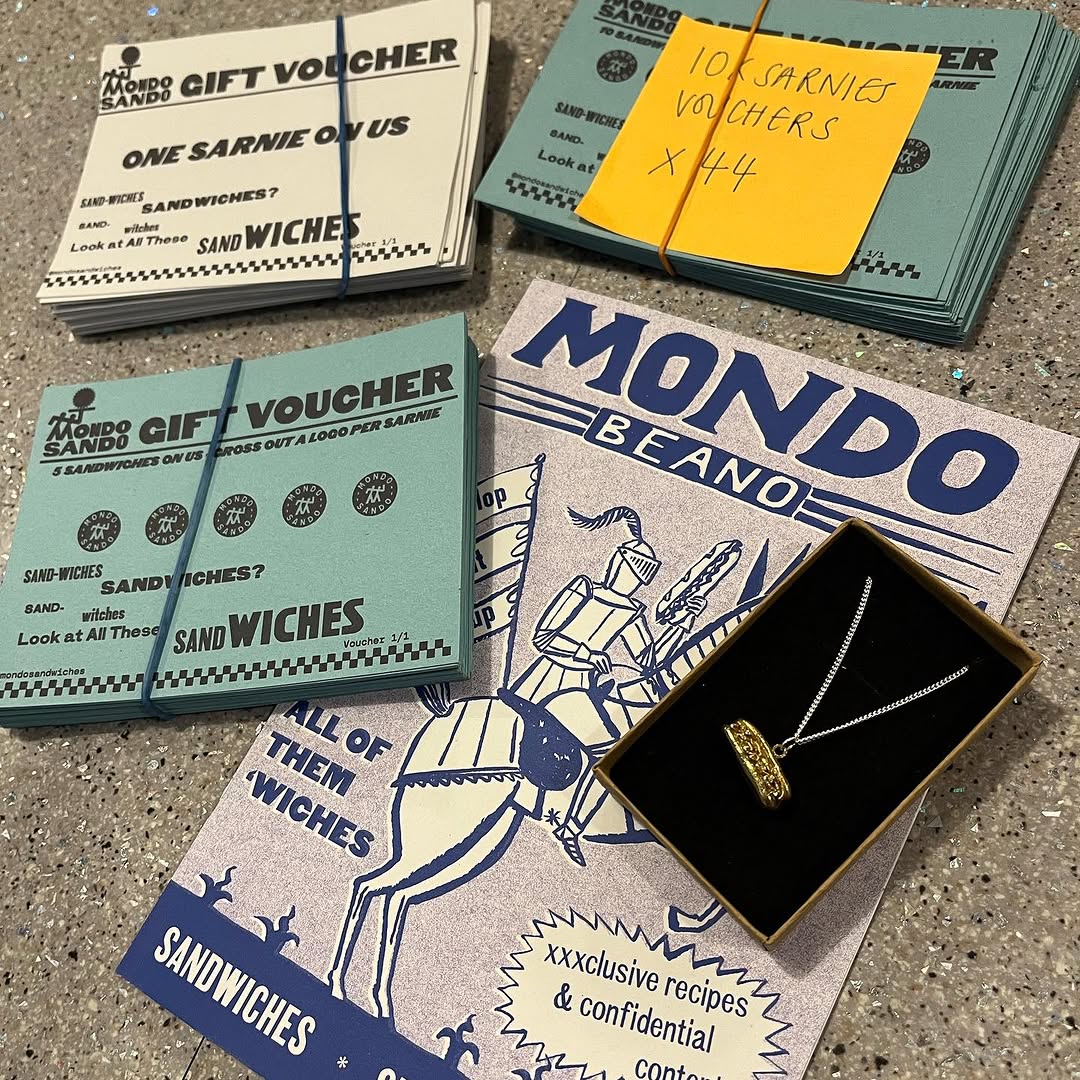
Loyalty rewards at Mondo Sando
On the heels of a successful 2022 residency at The White Horse in Peckham, the Mondo Sando team opened their debut brick-and-mortar site at the end of 2024 – Cafe Mondo in Camberwell. The sandwich shop by day and diner-meets-bar by night has a retro ambience. You’ll find surfaces in Rubik’s cube colours, cobalt and white chequered packaging, nostalgic boxy typography across the chalkboard and whiteboard-style menu displays, alongside a miscellany of vintage ephemera.
The interiors reflect the pair’s fascination with global casual food culture. ‘We’re interested in places like caffs, dive bars, izakayas – the places where fast food and getting drunk collide,’ Macrae says. He lists the traditional British ‘caff’, synonymous with Formica tabletops and laminated menus, and the old-school sandwich bar as influences, along with the New York luncheonette. ‘We drew some inspiration from places like B&H Dairy and S&P Lunch. We wanted a “shotgun” layout, where you have a counter to one side and the shop extends in a long straight line.’
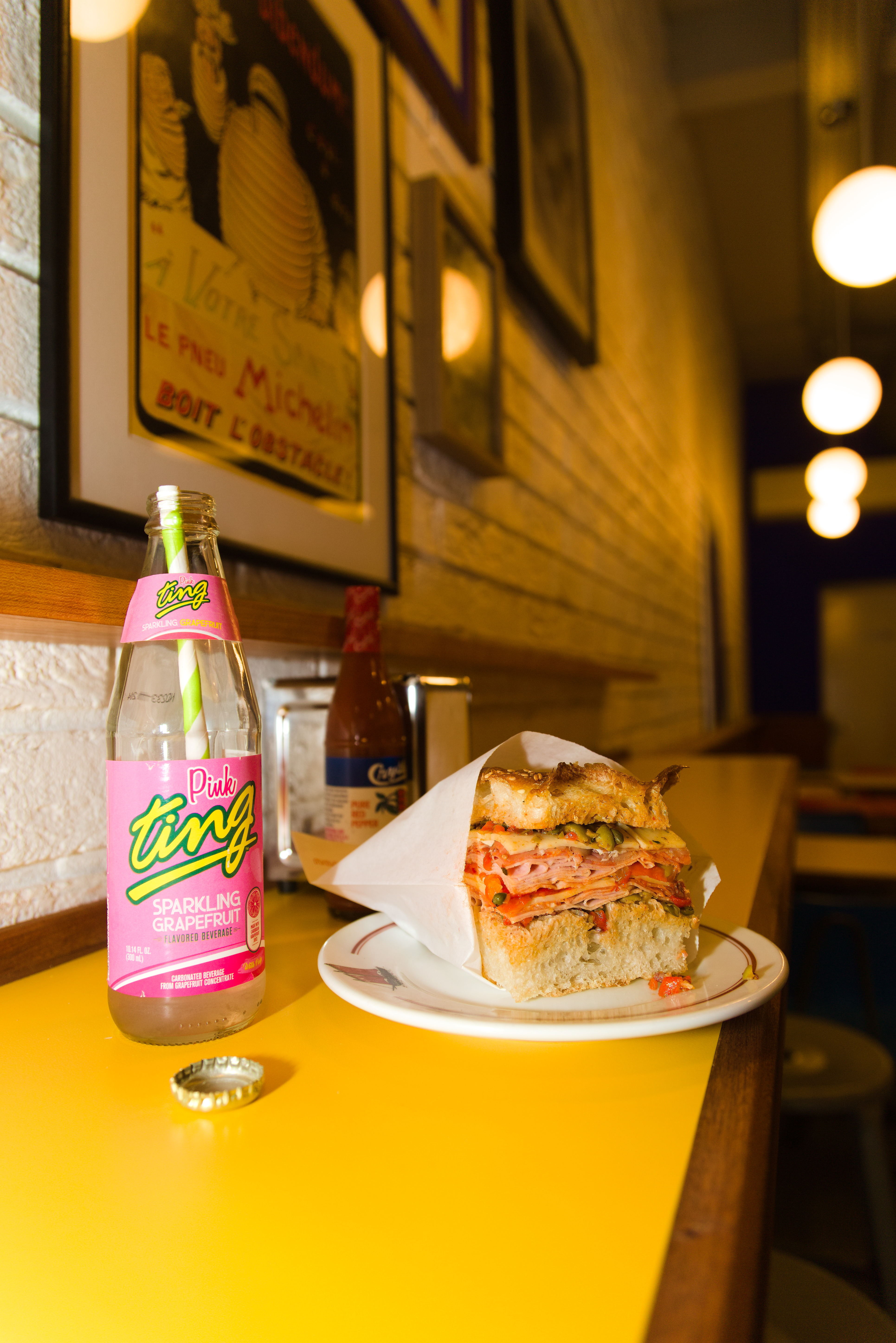
Cafe Mondo
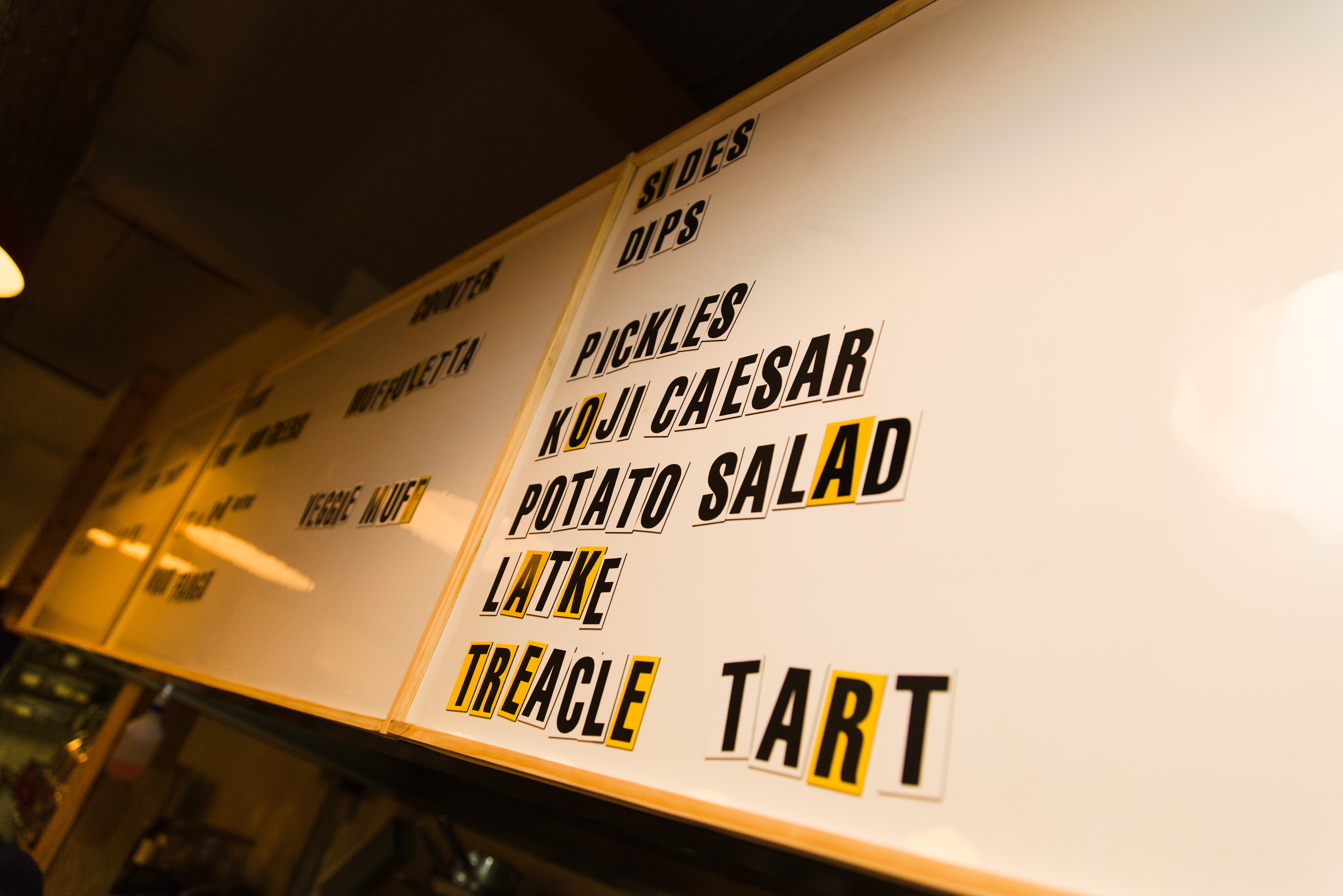
Cafe Mondo typography
At De Santis, tucked into the cavernous church crypt of Mercato Metropolitano in Mayfair, creative director Letizia Cervieri was charged with designing a look and feel that’s modern but in keeping with the spirit of the iconic Milanese panini house – in particular, the original Corsa Magenta location, which opened initially as a bar in 1964 and boasts a star-studded visitor list. There is a grown-up, bar-like sultriness to the covert London branch – reminiscent of a speakeasy – with its curved brick ceiling, mirror-lined wall, metallic rose-gold surfaces reflecting the table lamps, and muted ceiling lights. Must-tries include the beloved ‘Reggio’, filled with salty-sweet, buttery PDO parma, earthy porcini – extra silky with olive oil – and creamy, nutty fontina.
‘The design works for takeaway but you can come for lunch or dinner, and have a face-to-face chat over a panini and charcuterie with an aperitivo,’ Michael Weber, manager at De Santis, explains. The ritual of aperitivo may not be as quintessential to London’s dining culture as it is to Milan’s, but Weber believes spots designed like this can coax more late afternoon nibbling and sipping. ‘With the rise of wine bars and the pull away from digitalisation, people are looking for opportunities to connect throughout the week.’
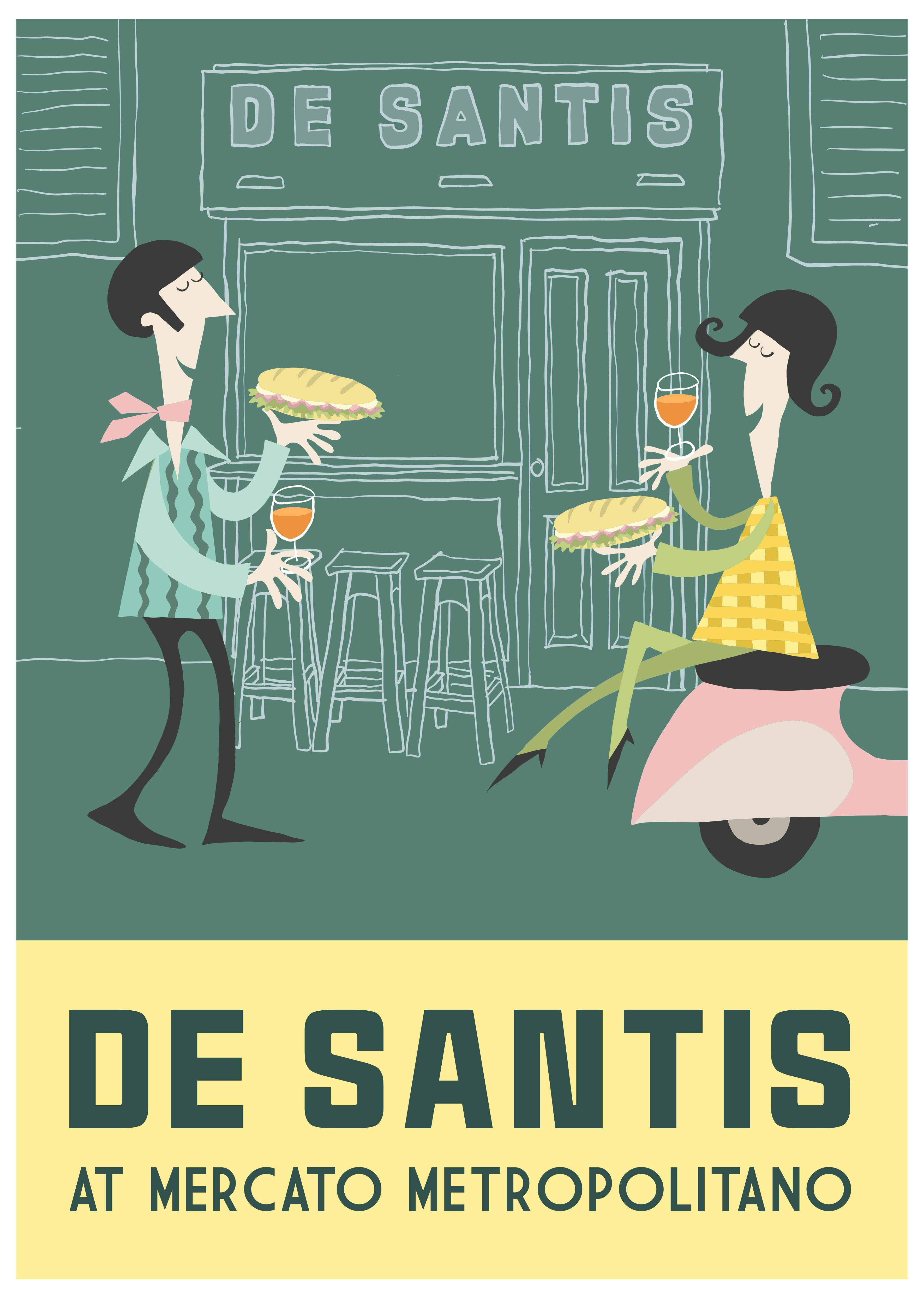
De Santis at Mercato Metropolitano branding

Dodo sandwich at De Santis
Dal Fiorentino brought Florentine Schiacciata sandwiches to Hoxton in 2022, spreading to a third shop in Fitzrovia last autumn. Here, garlands of cured sausage, chillies and garlic, and rows of ornamental wall plates bring traditional Tuscan flair. Decor is also central to the transportive mission of It’s Bagels, the New York-style bagel shop opened by fashion photographer Dan Martensen in Primrose Hill two years ago.
As with the brand's previous locations, for its newest opening in Soho last year, Martensen enlisted Brooklyn-based GRT Architects to bring the essence of a traditional Big Apple diner to one of London’s most storied neighbourhoods. The 15-cover site has the typical chequerboard flooring, wooden panelling, and theatre-like lightboxes signposting menu items. The bold but simple capitalised sign, neatly hand-painted in red and navy, has a patriotic, ‘land of liberty’ feel to it.
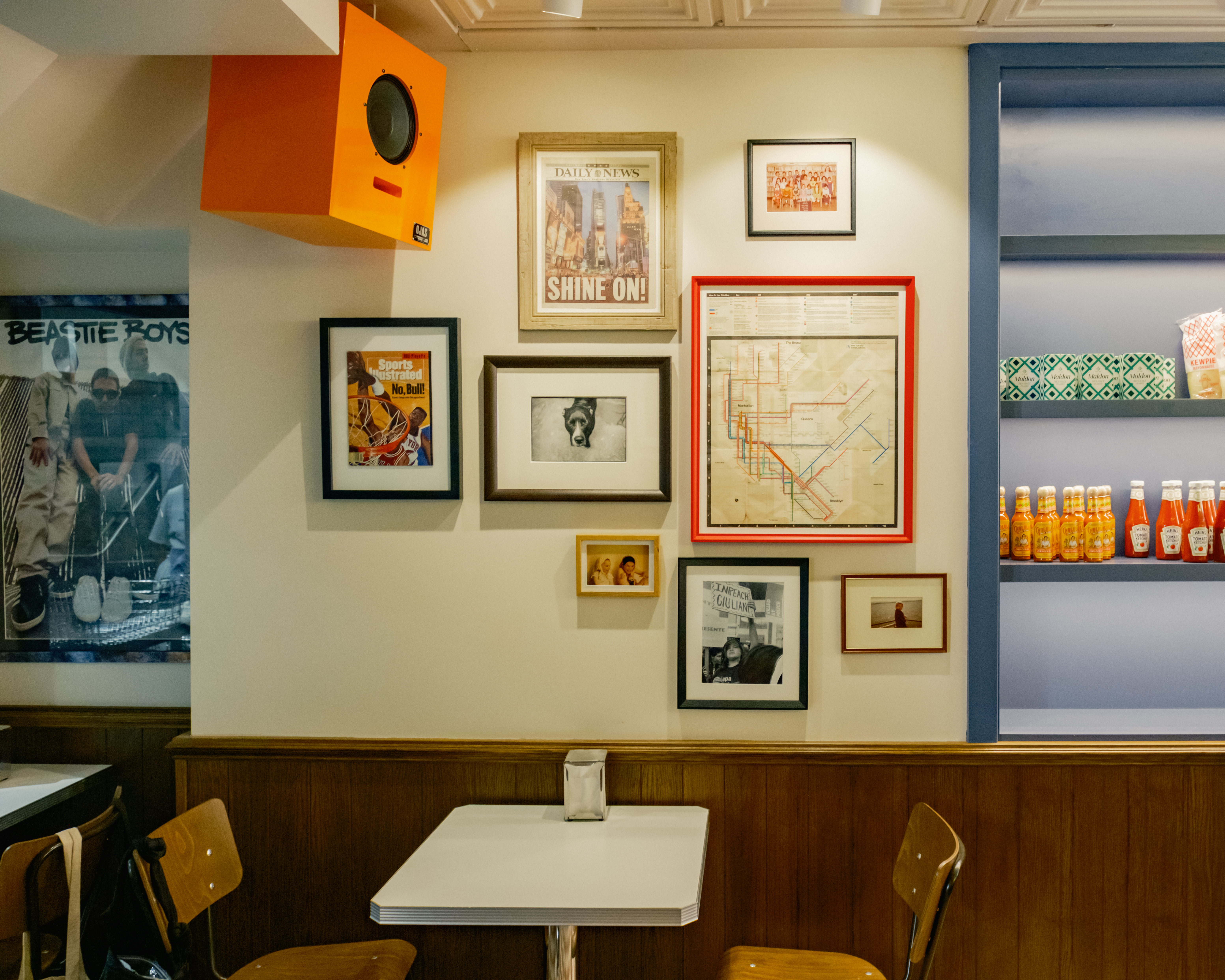
It’s Bagels Primrose Hill
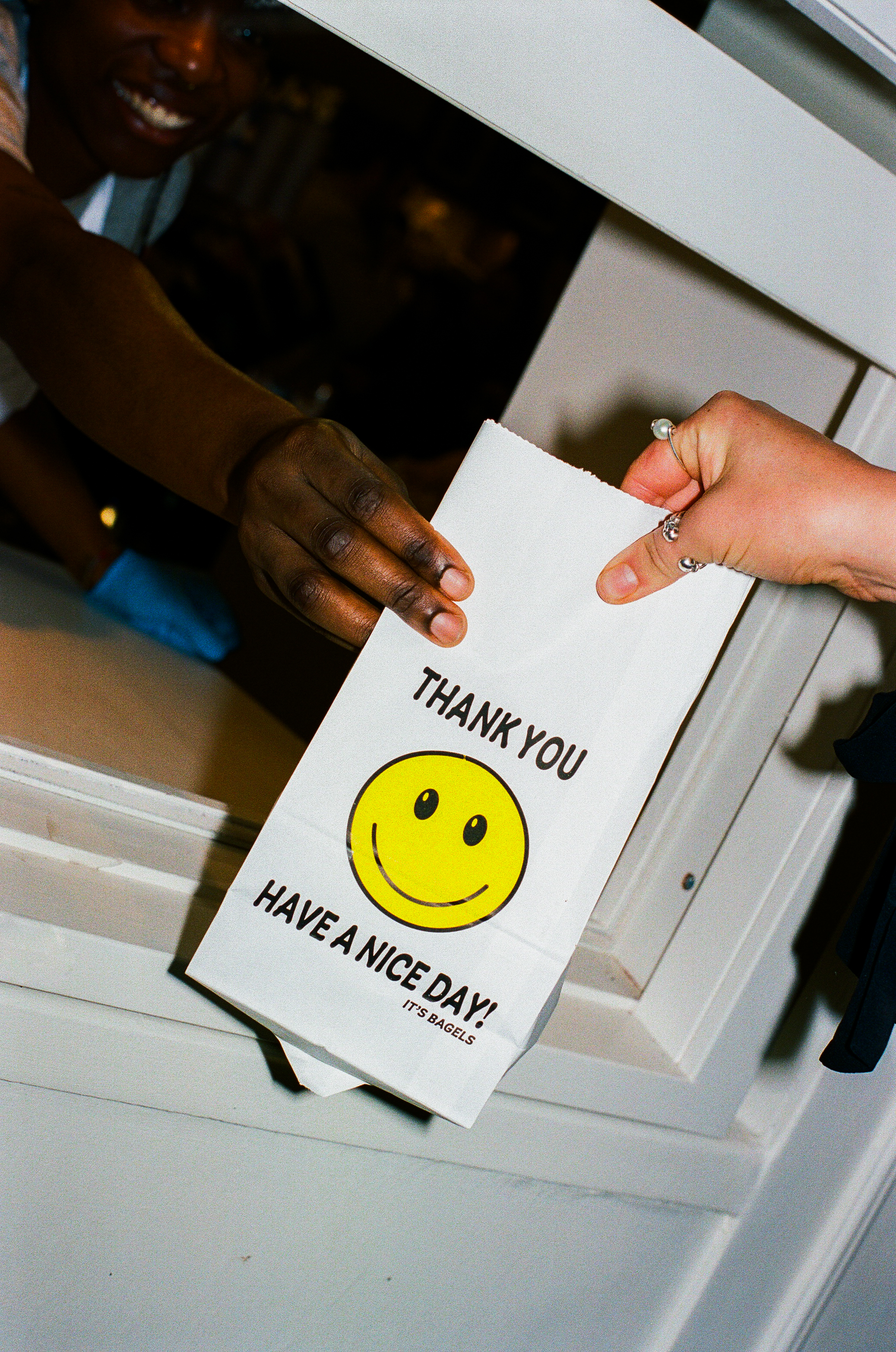
It’s Bagels Notting Hill
For the new generation of sandwich shops, an identifiable visual language uniting their physical and digital presence is key to attracting, connecting with, and growing a devoted fan base, who can associate with the establishment, not just as a shop, but as a part of their lifestyle.
The resurgence of London sandwich shops looks set to continue. De Santis’ Weber reveals, ‘We’re looking for a second location – somewhere that reflects the historic charm of De Santis but accommodates more Londoners.’ Similarly, Rogue Sarnies is one of a number of brands currently expanding thanks to the city's continued affinity for sandwiches.
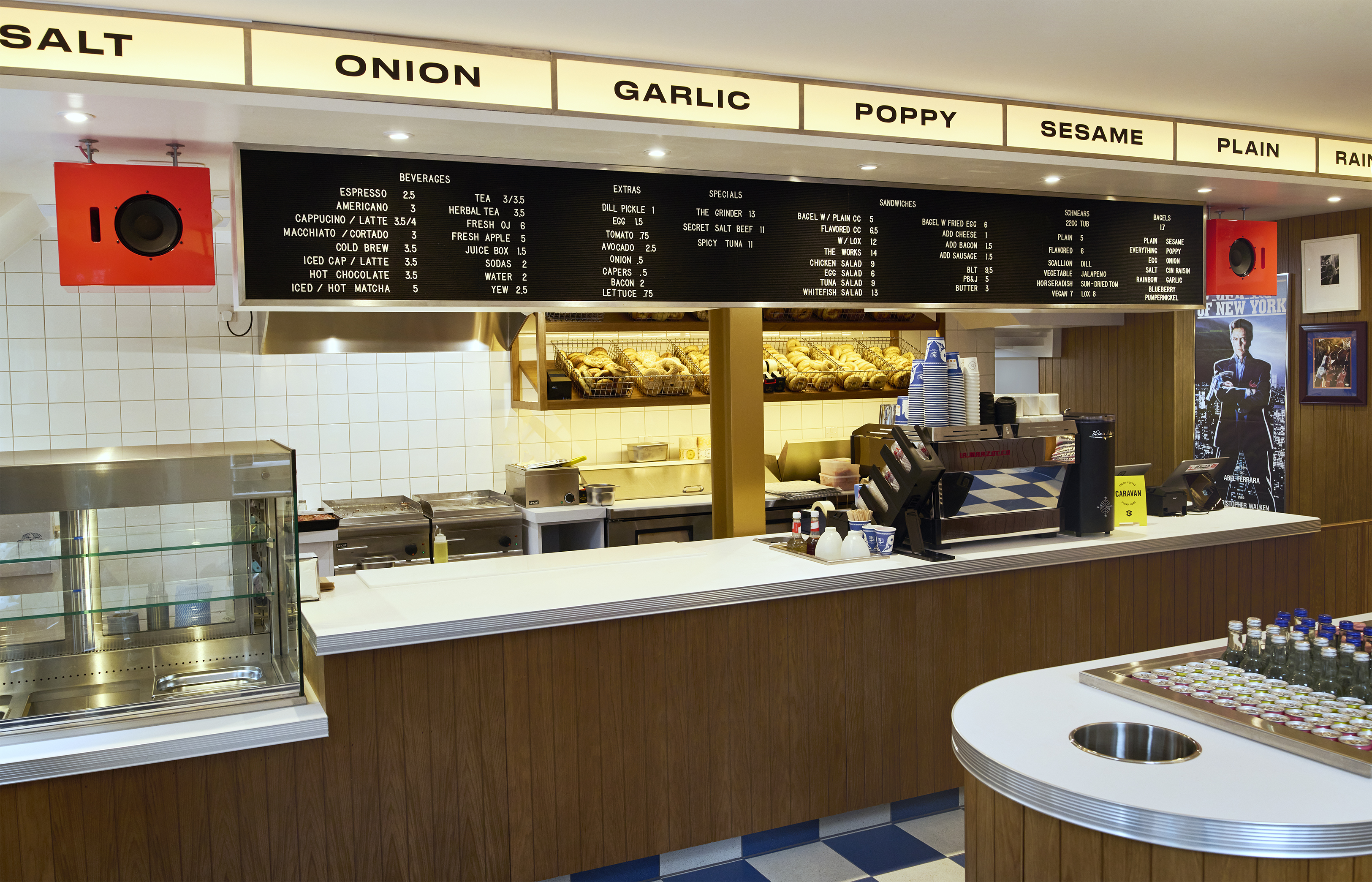
It’s Bagels Soho
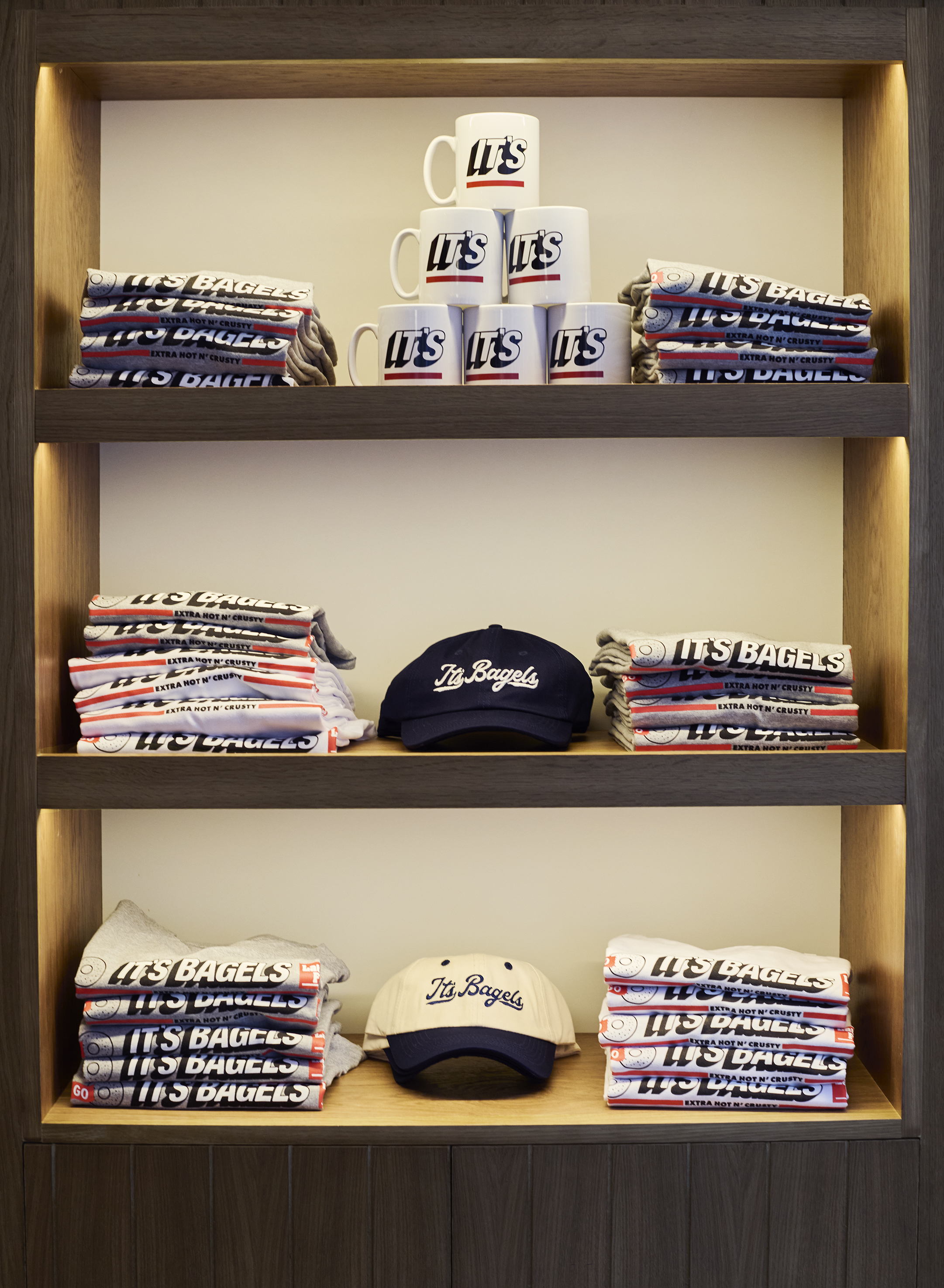
It’s Bagels merch
For Freddie Sheen, who worked at Michelin-starred Galvin La Chapelle before starting Rogue Sarnies, there’s something pleasantly grounding about sandwiches. ‘Putting something delicious between two slices of bread was a breath of fresh air after the swipes, drags and purées of fine dining.’ Macrae of Cafe Mondo notes the timelessness and nostalgic pull of sandwiches. ‘It’s no coincidence that our most ordered sandwich by a country mile is the fish finger sandwich. A lot of people had it at school, or after school, and are returning to that comfort as adults.’
And so, a century on from the artists’ lair of Sandy’s, the sandwich shop is a cool hangout once again.
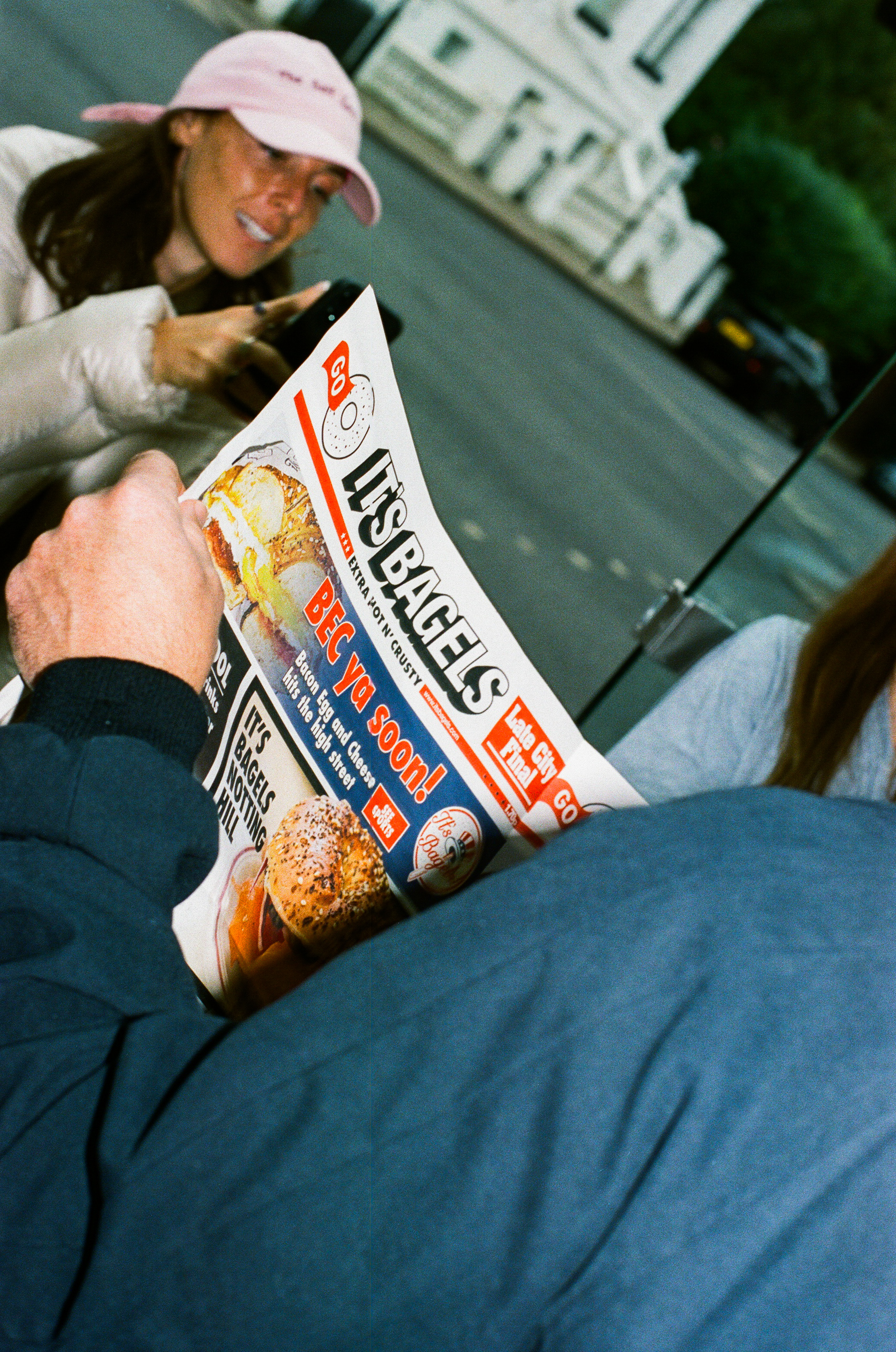
It’s Bagels Notting Hill
Toyo Odetunde is a London-based food and travel writer, exploring topics such as hospitality and the connections between food, craft and culture for titles like Condé Nast Traveller, National Geographic, BBC Travel, Vittles, House and Garden and the i paper.
-
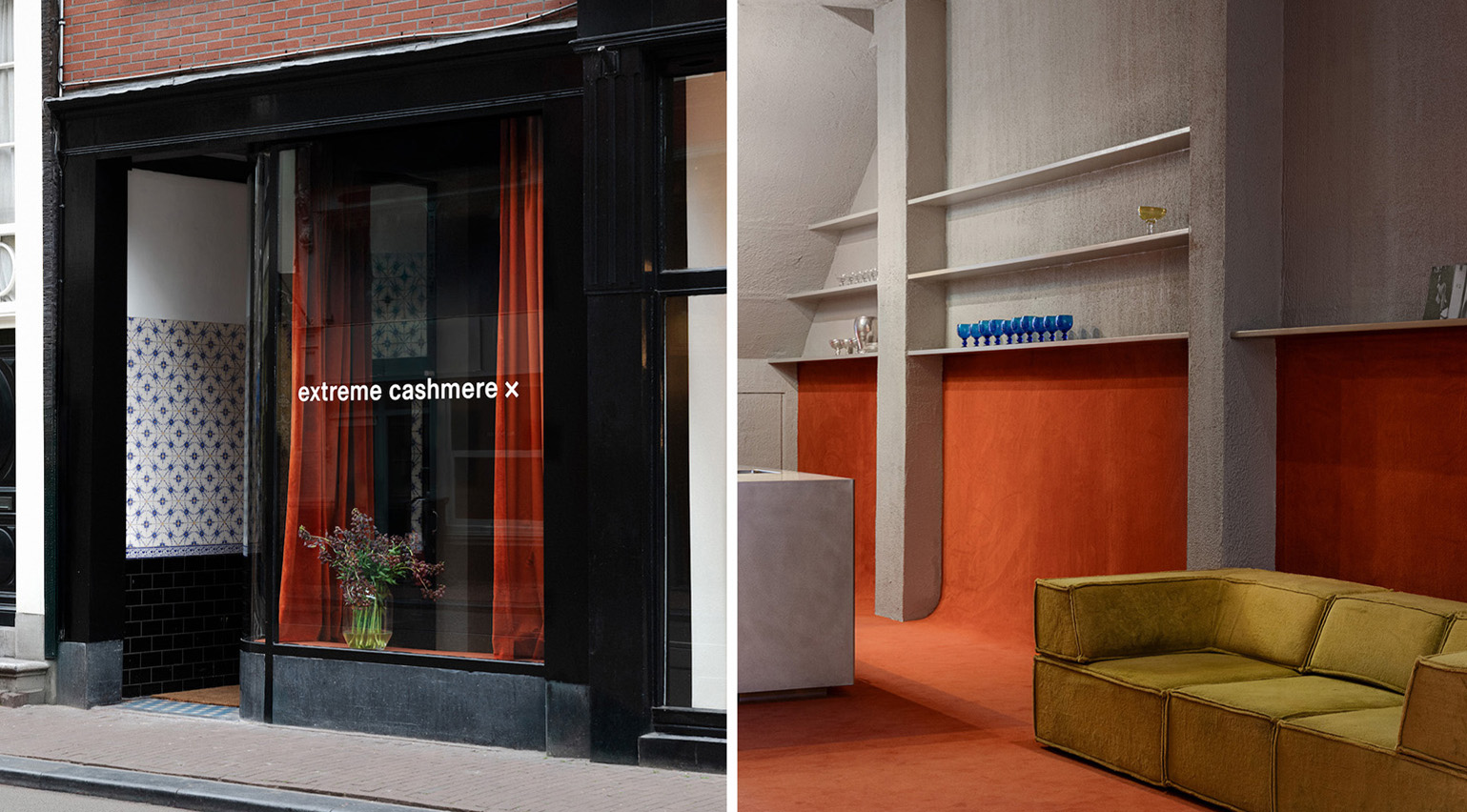 Extreme Cashmere reimagines retail with its new Amsterdam store: ‘You want to take your shoes off and stay’
Extreme Cashmere reimagines retail with its new Amsterdam store: ‘You want to take your shoes off and stay’Wallpaper* takes a tour of Extreme Cashmere’s new Amsterdam store, a space which reflects the label’s famed hospitality and unconventional approach to knitwear
By Jack Moss
-
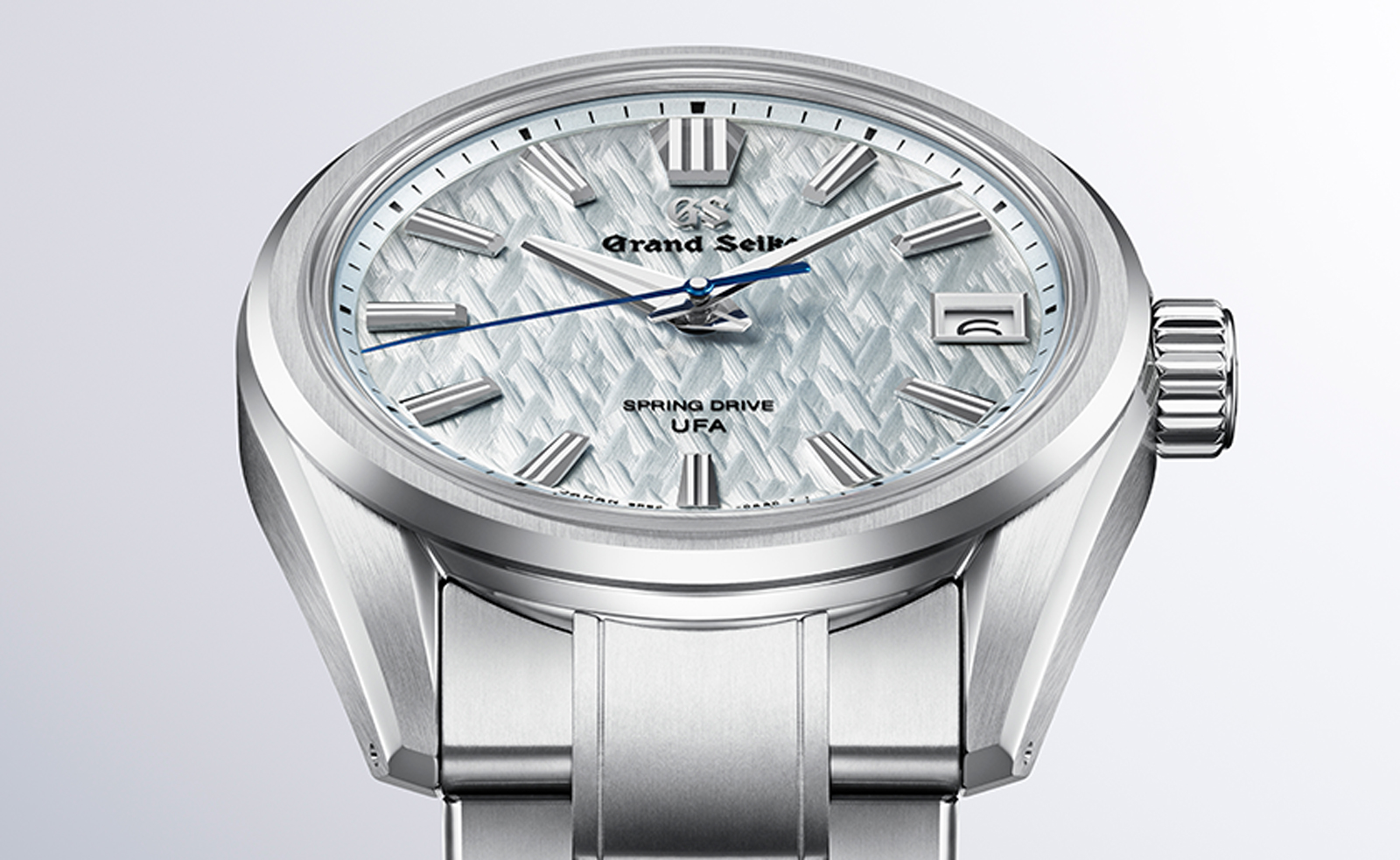 Titanium watches are strong, light and enduring: here are some of the best
Titanium watches are strong, light and enduring: here are some of the bestBrands including Bremont, Christopher Ward and Grand Seiko are exploring the possibilities of titanium watches
By Chris Hall
-
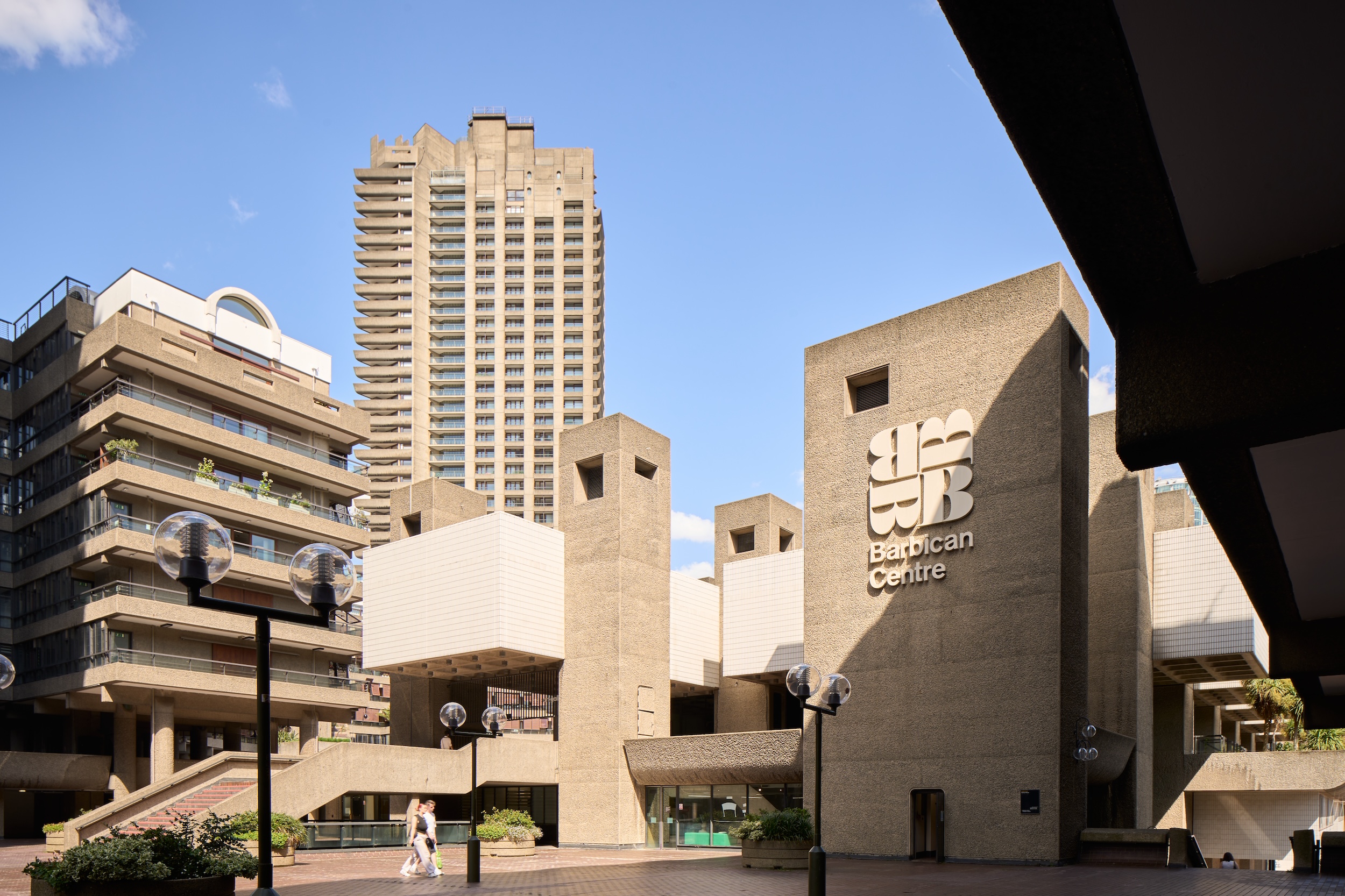 Warp Records announces its first event in over a decade at the Barbican
Warp Records announces its first event in over a decade at the Barbican‘A Warp Happening,' landing 14 June, is guaranteed to be an epic day out
By Tianna Williams
-
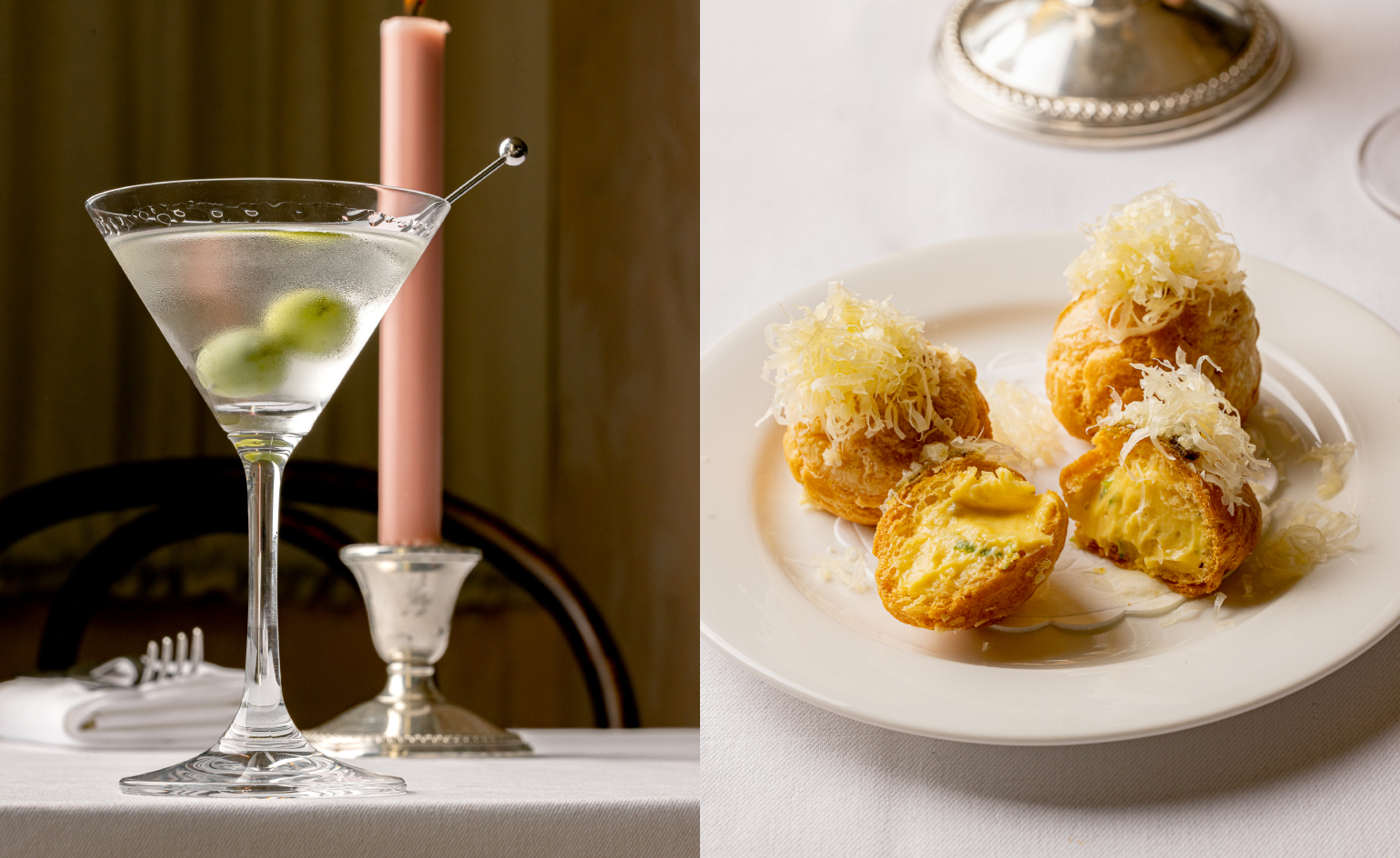 One Club Row is London’s answer to the Lower East Side
One Club Row is London’s answer to the Lower East SideLocated at the site of the former hotspot Les Trois Garçons, One Club Row brings back noughties glamour with 19th-century interiors, gourmet bites, and jazz nights
By Ben McCormack
-
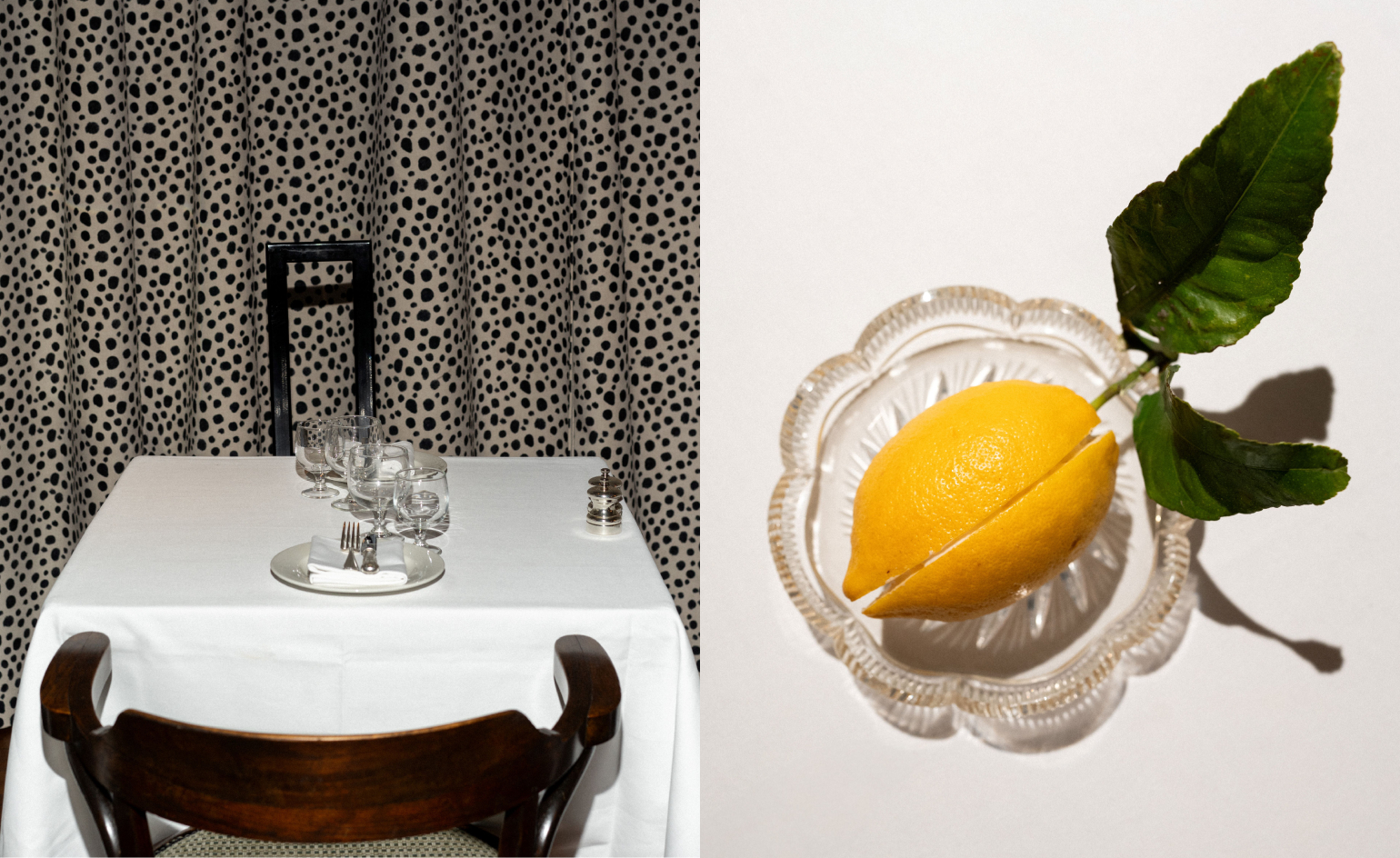 Marylebone restaurant Nina turns up the volume on Italian dining
Marylebone restaurant Nina turns up the volume on Italian diningAt Nina, don’t expect a view of the Amalfi Coast. Do expect pasta, leopard print and industrial chic
By Sofia de la Cruz
-
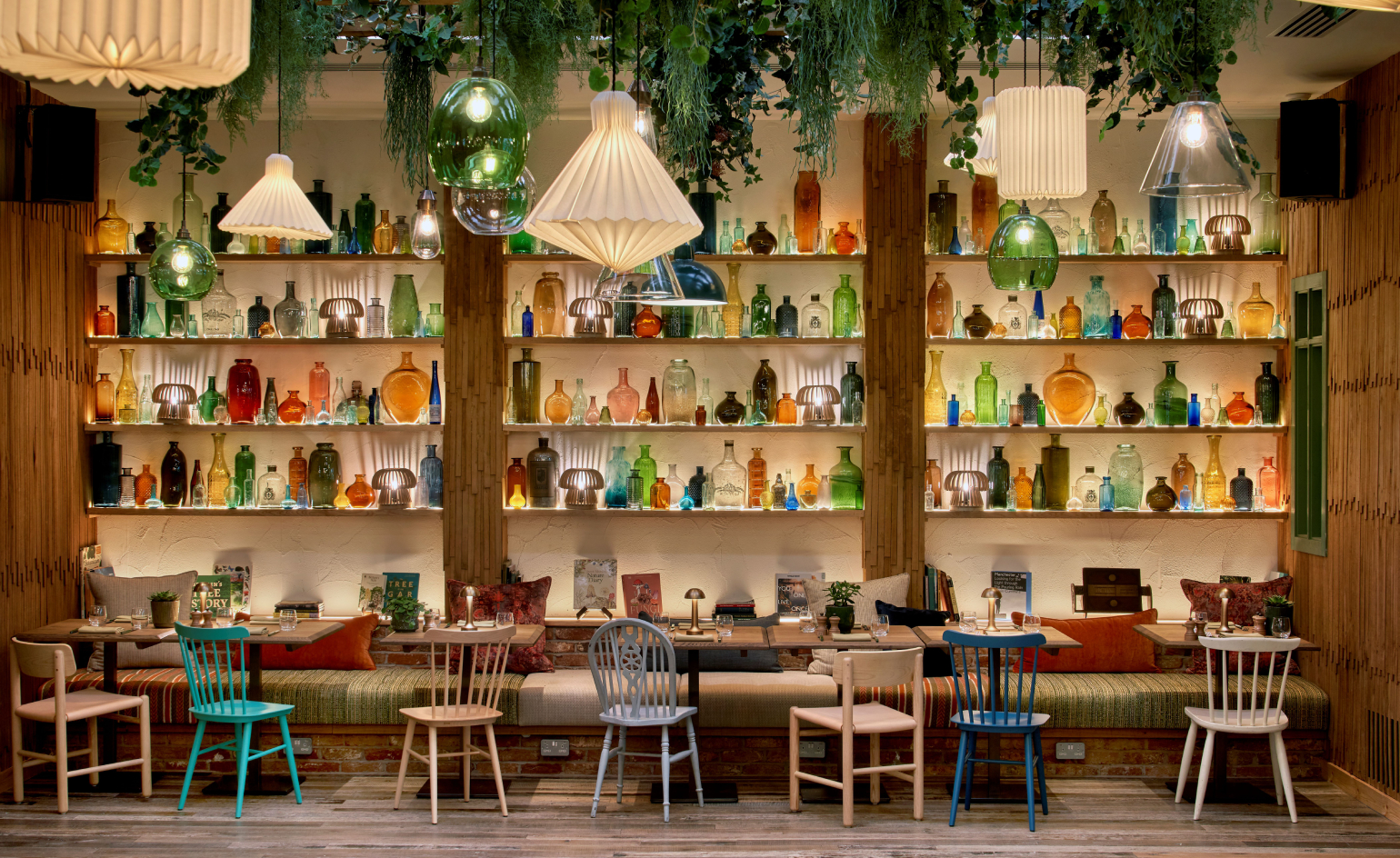 Wallpaper* checks in at Treehouse Hotel Manchester: you may not want to leaf
Wallpaper* checks in at Treehouse Hotel Manchester: you may not want to leafTreehouse Hotel Manchester offers a nature-infused biophilic sanctuary amidst the city’s ever-growing architectural canopy
By Imogen Green
-
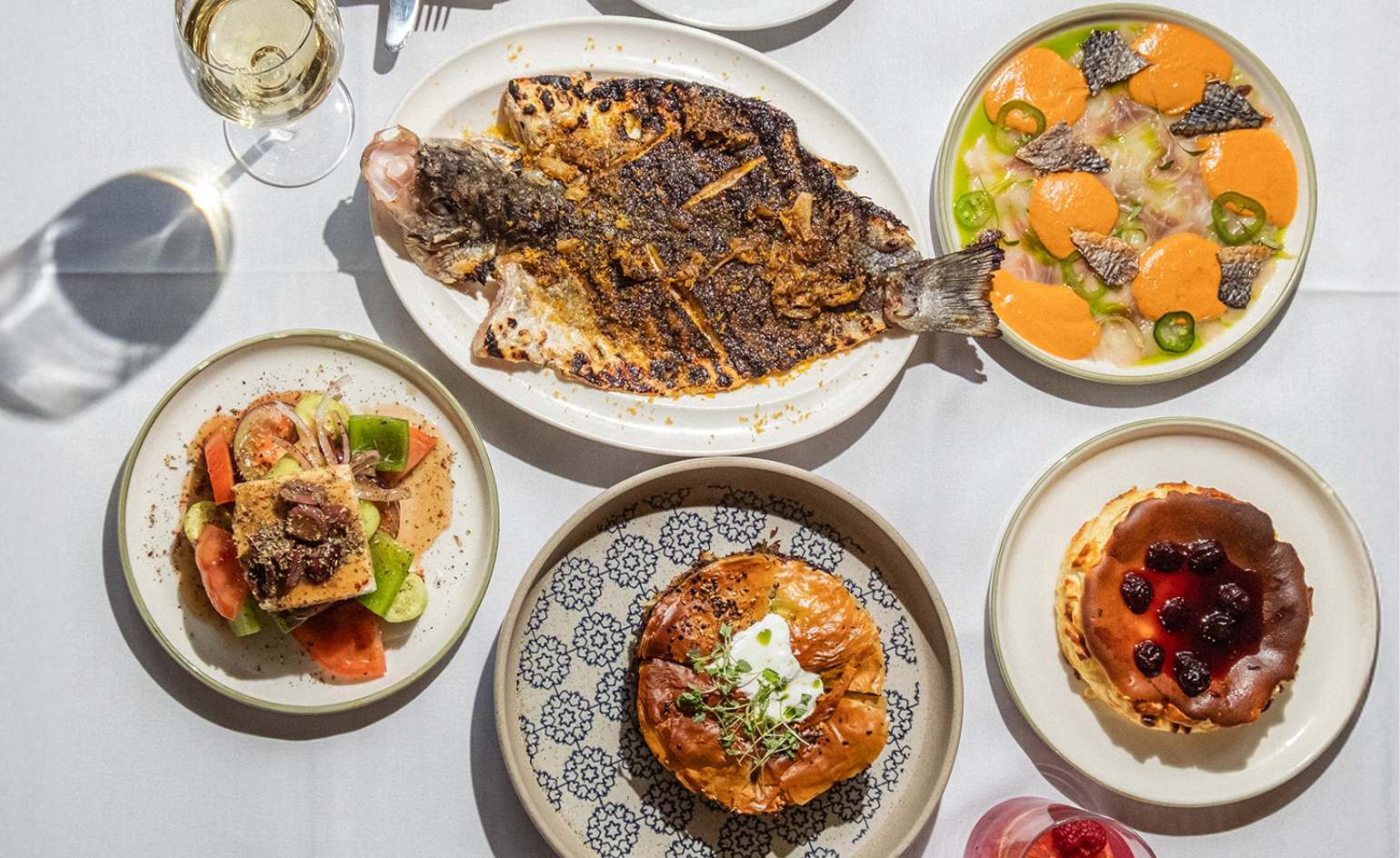 Dining at Pyrá feels like a Mediterranean kiss on both cheeks
Dining at Pyrá feels like a Mediterranean kiss on both cheeksDesigned by House of Dré, this Lonsdale Road addition dishes up an enticing fusion of Greek and Spanish cooking
By Sofia de la Cruz
-
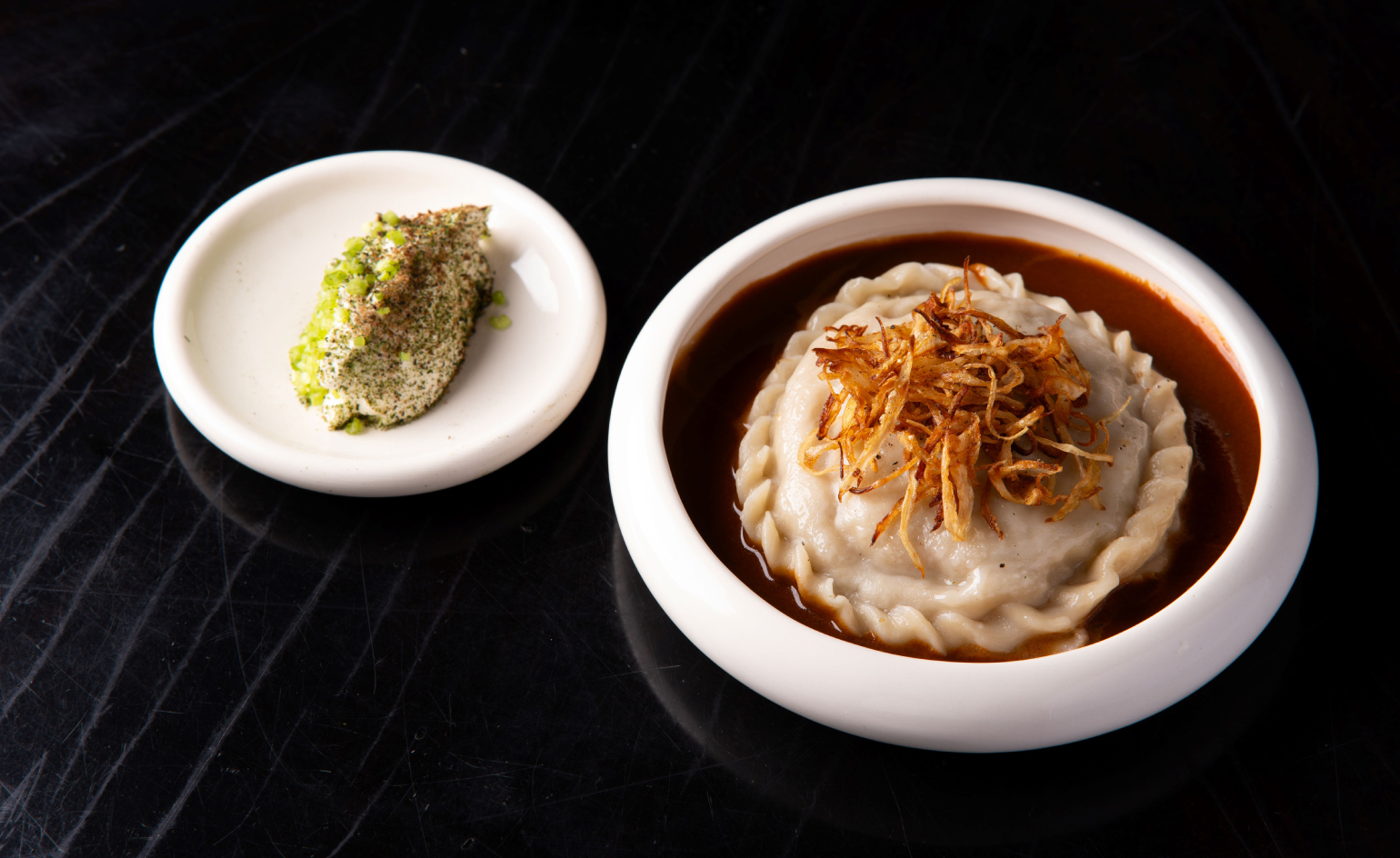 London restaurant Tatar Bunar puts Ukrainian heritage front and centre
London restaurant Tatar Bunar puts Ukrainian heritage front and centreFamily recipes and contemporary design merge at this new east London restaurant by Ukrainian restaurateurs Anna Andriienko and Alex Cooper
By Ben McCormack
-
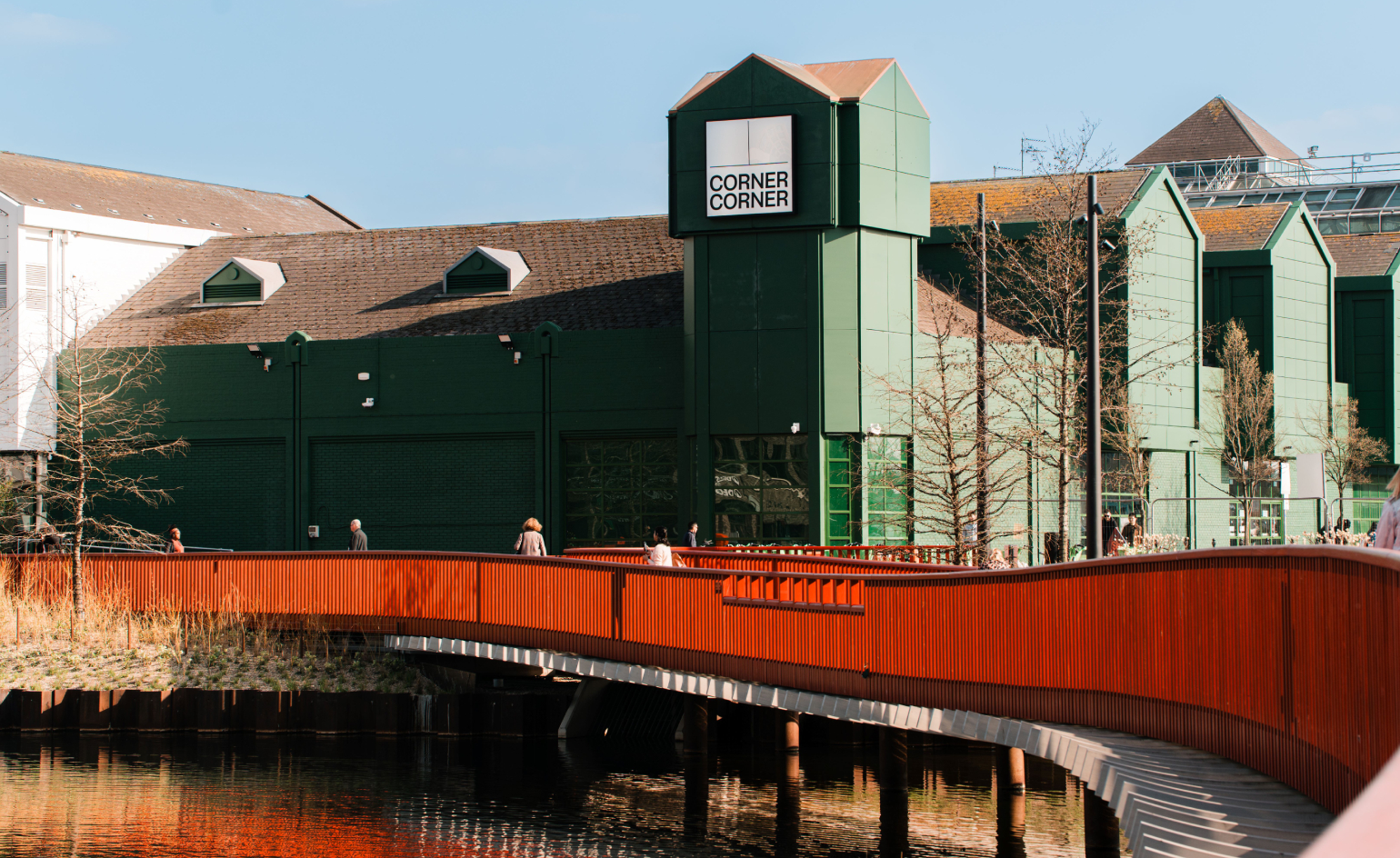 Corner Corner may be London's most unique entertainment destination yet
Corner Corner may be London's most unique entertainment destination yetThe newly-opened venue combines food, jazz and—yes—urban farming beneath one sprawling roof
By Sofia de la Cruz
-
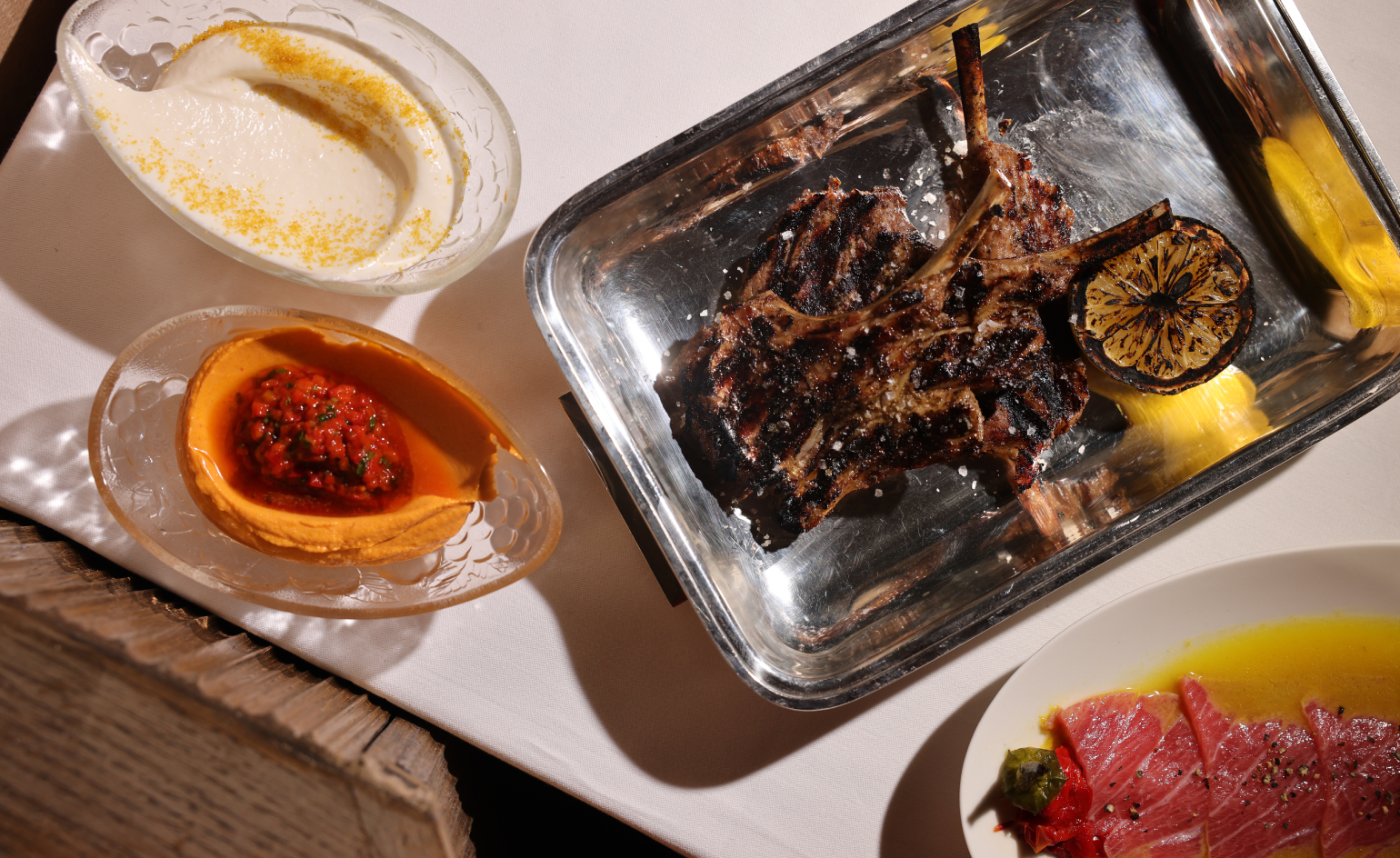 For a taste of Greece, head to this playful new restaurant in London’s Chelsea
For a taste of Greece, head to this playful new restaurant in London’s ChelseaPachamama Group’s latest venture, Bottarga, dishes up taverna flavours in an edgy bistro-style setting
By Sofia de la Cruz
-
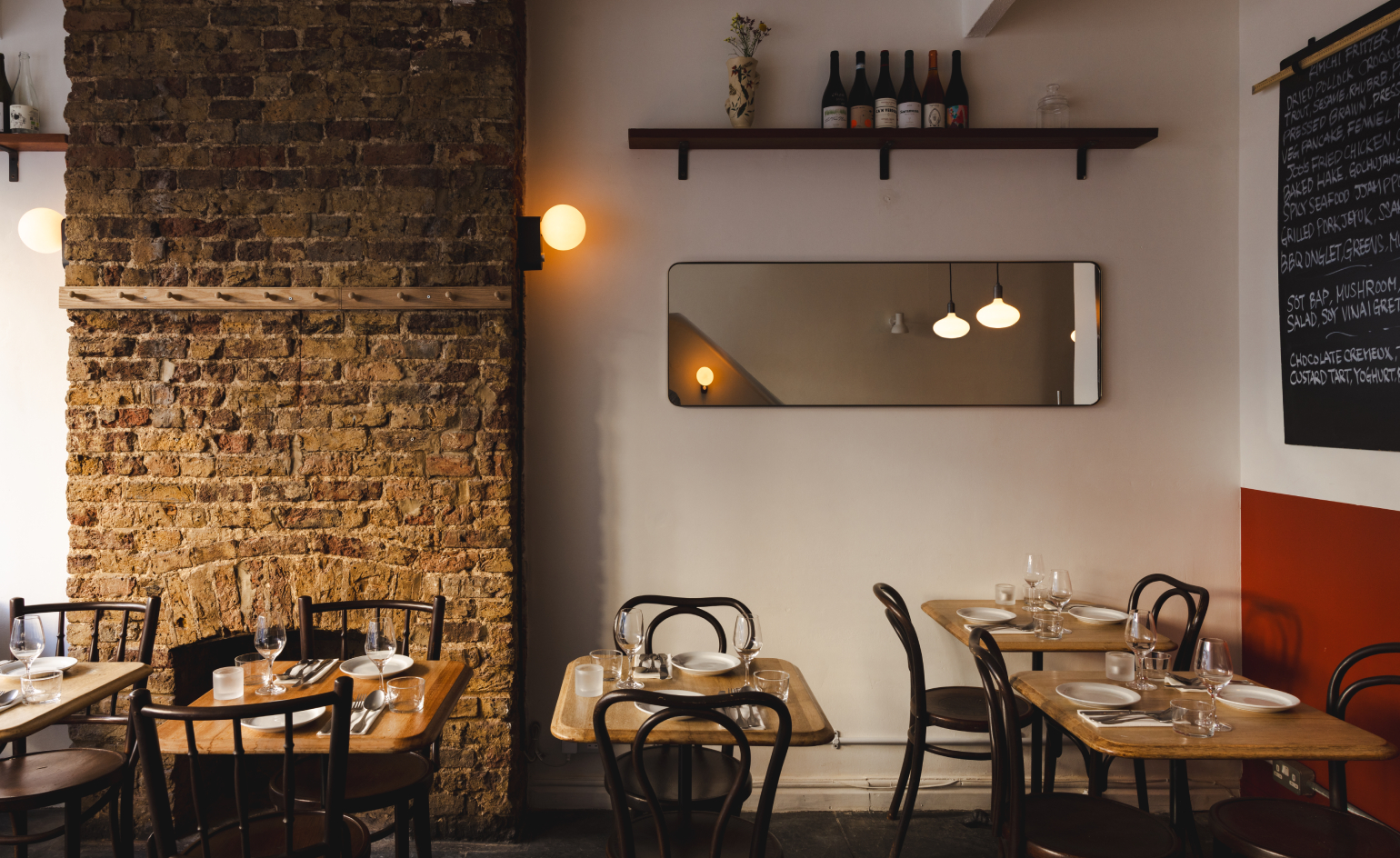 A buzzy Korean pop-up becomes a permanent fixture in East London
A buzzy Korean pop-up becomes a permanent fixture in East LondonChef Joo Won has turned his Calong pop-up permanent in the arty enclave of Stoke Newington
By Ben McCormack